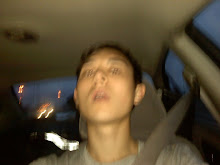
The Hole is director Tsai Ming-Liang’s cinematic inauguration of the new millennium. Filmed on the cusp of the twenty-first century The Hole captures a unique historical moment for global humanity, and the specific impacts and activities of this moment’s becoming on Taiwan. While it is emblematic of Tsai’s efforts to return to a representation of the common, and everyday experience of working Taiwanese it also addresses the acute millennial anxiety of the time. The Hole is filled with prophetic ambience, and messianism that so captivated the earth’s inhabitants for a few years, and the very anxious eve of the year 2000.
Filmed in various sections of one of Taipei’s apparently labyrinthine and extensive quasi-slums, the driving narrative of The Hole is the interaction between two neighbors. Living on top/below one another in what looks like a public housing project, abandoned by the authorities (tenant’s rights aside) they meet as witnesses and victims of the shared destruction of their home. Early on in the film, a plumber barges in to the upstairs neighbor’s room demanding to service leaking pipes. When the neighbor returns later that day he finds a crater and rubble, exposed piping, and a hole connecting his room with the downstairs neighbor’s. In the mean time, the downstairs neighbor struggles to slow a leak from a burst pipe in her wall as the water in her apartment rises higher and higher. Her sopping wardrobe piled on the floor as a makeshift levee proves ineffective. Beaten down by endless rain, plagued by the mysterious “Taiwan Virus”—a syndrome that provokes its hosts to exhibit cockroach like behavior—and left to make a home of saturated rubble, the neighbor’s story addresses themes at this point common to representations of city life. Loneliness, drudgery, and the exhaustion of urban repetition afflict the characters of The Hole.
Apocalyptic aside, the decay and turmoil that surrounds these Taipei characters reflects a terror less fantastic than disturbing viruses, and the possibility of the overnight collapse of technological society. The Hole is in many ways a portrait of those figures swept up by rapid development, and fireworks like economic boom, definitive of the “Global South” in the late 20th century. The neighbors in The Hole live with utter abandonment. On a structural level this means that their government cannot or will not intervene to protect its citizens living in places deemed invaluable. As a virus ravages Taiwan’s populace—we learn in the beginning of the film through a news clip audio-montage—the government’s chief strategy has been evacuation and quarantine. The histories of the main characters in this film are not entirely revealed, but for whatever reason, they chose to stay in the homes they have made. (A comic irony throughout the film is the downstairs neighbor’s frequent calls on the plumber to fix a variety of water problems in her apartment, from burst pipes to leaky toilets. This while the water company plans to shut off the supply at the break of the New Year). Whatever the reason the characters stay in their crumbling home we can reason out the decision to risk illness and death over dislocation and displacement.
Taiwan may not be the location to best exemplify the destructive impulse in this global trend in too-fast development. I mean this only in the sense that Taiwan’s government (outside of the national question with China) is stable, and enjoys a vital democratic sphere, and relatively high standard of living. In this way director Tsai Ming-Liang’s film is both a testament of the times, yet in its specific choice of location ahistorical. But this is the power of the film; The presentation of social ills that are both fantastic (comical/disturbing bug viruses, and the end of the world), and visceral in their reality (mass evacuation, dispossession, government neglect) creates a fictitious narrative that is both alive in imagination and easily transposable with many different geopolitical spheres.


2 comments:
I heard its outdated. Heh.heh.heh.
Sorry, I didn't even read this.
visitor Q?
Post a Comment